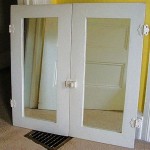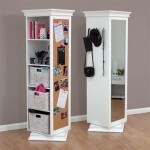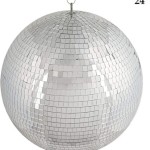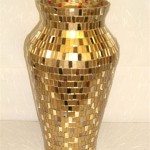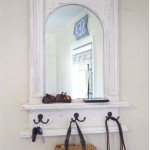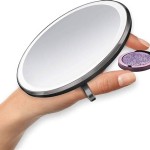How Big Should a Mirror Above Fireplace Be In Living Room?
Determining the appropriate size of a mirror to hang above a fireplace in a living room requires careful consideration of several factors. The mirror acts as a focal point, and its dimensions should complement both the fireplace itself and the overall aesthetic of the room. An improperly sized mirror can disrupt the room's balance, appearing either too small and insignificant or too large and overwhelming. This article will explore key considerations to help determine the ideal mirror size for above a fireplace.
Before addressing specific measurements, it is vital to understand the function a mirror serves in this context. Beyond its decorative appeal, a mirror can enhance the room's perceived size and brightness. It reflects light, making the space feel more open and airy. It can also reflect a view, either from a window opposite the fireplace or from elsewhere in the room, adding depth and visual interest. Therefore, the mirror’s size should be strategically chosen not only for its aesthetic qualities but also for its functional contribution to the room's ambiance.
Assessing the Fireplace Dimensions
The first and most crucial step in determining the ideal mirror size is to measure the fireplace. Pay attention to both the width and height of the firebox opening, the mantel (if present), and the overall dimensions of the fireplace structure. The mantel often presents the most natural boundary for the mirror. A common guideline is to select a mirror that is approximately two-thirds to three-quarters the width of the mantel. This ratio establishes visual harmony and ensures the mirror is proportionate to the primary architectural feature.
For example, if the mantel's width is 60 inches, the mirror's width should ideally fall between 40 and 45 inches. This range leaves sufficient space on either side of the mirror, preventing it from feeling crammed or disproportionate. If there is no mantel, use the overall width of the fireplace surround as the reference point. In this case, maintaining the two-thirds to three-quarters ratio will still provide a balanced appearance.
The height of the mirror is similarly important. It should be proportionate to the height of the fireplace and the size of the wall above it. A too-tall mirror can dominate the space and appear out of place, while a too-short mirror can seem insignificant and lost on the wall. Generally, the height can be determined by considering the space between the top of the mantel (or, if there is no mantel, the top of the fireplace surround) and the ceiling. The mirror should fill a substantial portion of this vertical space but not to the point of overwhelming it. A good starting point is to aim for a mirror height that is roughly half to two-thirds of the available vertical space.
Consider also the style of the fireplace. A grand, ornate fireplace might call for a larger, more elaborate mirror, while a minimalist fireplace might benefit from a smaller, simpler mirror. The architectural style of the fireplace should guide the selection of both the mirror's size and its frame.
Room Size and Ceiling Height Considerations
The size of the living room and the height of the ceiling significantly influence the appropriate mirror size. In a small room with low ceilings, a large mirror can inadvertently create a feeling of claustrophobia. While a mirror can visually expand a space, an oversized one in a small room can become overpowering and draw too much attention to itself, making the room seem smaller than it actually is.
Conversely, in a large room with high ceilings, a small mirror can get lost and fail to make a visual impact. In this scenario, a larger mirror is necessary to command attention and balance the scale of the room. High ceilings can visually dwarf smaller elements, so a mirror that is substantial in both width and height will be more effective.
To determine the appropriate mirror size in relation to the room's dimensions, consider the overall scale of the furniture and other decorative elements. Ensure the mirror is proportionate to the size of the sofa, chairs, and other large items in the room. The goal is to create a cohesive and balanced visual composition where no single element dominates the others. If the room features predominantly large, substantial furniture, a larger mirror will be more appropriate. If the furniture is more delicate and understated, a smaller mirror might be a better choice.
Furthermore, consider the distance from which the mirror will primarily be viewed. If the fireplace is visible from a distance, such as from an adjacent dining room or hallway, a larger mirror will be more effective in creating a focal point. If the fireplace is primarily viewed from within the living room, a smaller mirror might suffice.
Mirror Frame and Style
The frame of the mirror contributes significantly to its overall size and visual impact. A wide, ornate frame can add several inches to the mirror's overall dimensions and make it appear larger than it actually is. Conversely, a thin, minimalist frame will have a minimal impact on the mirror's size and visual weight.
The style of the frame should complement both the style of the fireplace and the overall aesthetic of the room. A traditional fireplace might pair well with a mirror featuring an antique-style frame, while a modern fireplace might call for a sleek, minimalist frame. The frame's color and material should also be carefully considered to ensure they coordinate with the room's color palette and décor.
Consider whether the frame is intended to blend in with the surrounding décor or to stand out as a statement piece. If the goal is to create a subtle and understated focal point, a frame that matches the wall color or the fireplace surround might be appropriate. If the goal is to create a bold and eye-catching focal point, a frame in a contrasting color or with a more elaborate design might be a better choice.
Furthermore, the shape of the mirror can influence its perceived size. A rectangular mirror will generally appear larger than a round or oval mirror of the same surface area. The shape should be chosen based on the overall design of the room and the desired visual effect. A rectangular mirror can visually elongate a room, while a round or oval mirror can soften the angles and create a more relaxed and inviting atmosphere.
Ultimately, the decision of how big a mirror should be above a fireplace in a living room involves carefully balancing the dimensions of the fireplace, the size of the room, and the style of the mirror and its frame. By considering these factors, individuals can select a mirror that not only enhances the room’s aesthetic appeal but also contributes to its overall sense of balance and harmony.

5 Top Tips For Hanging Mirrors Above Fireplaces Living Fires

Things To Know Before Hanging A Mirror Above The Fireplace
:max_bytes(150000):strip_icc()/271342800_619280975946855_5866172257895318662_n-f6b2756c1768481b9b258f56fe44d13a.jpg?strip=all)
Design Guide To Putting A Mirror Over The Fireplace

Mirror Over The Mantel What Size To Get Laurel Home

35 Mirror Above Fireplace Ideas For A Beautiful Look Nikki S Plate

Mirror Over The Mantel What Size To Get Laurel Home

The Best Fireplace Mirror Ideas For A Simple Attractive Space

Do S And Don Ts Of Hanging Mirrors Above Fireplace

35 Mirror Above Fireplace Ideas For A Beautiful Look Nikki S Plate

5 Top Tips For Hanging Mirrors Above Fireplaces Living Fires
